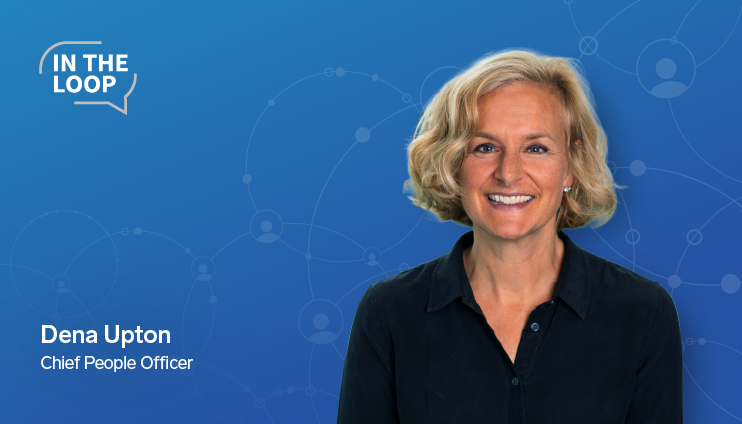The Operating System Powering Our Culture
Last week, we shared an important milestone for Advisor360°: the launch of Advisor360° Wealth OS, our AI-native advisor experience designed to help...
Solve your current pain points with our award-winning solutions.
Increase automation with our modern wealth platform.
The leading end-to-end wealth management platform.
Our team works to anticipate and surpass our clients’ expectations.
Merge our open, integrated platform and its solutions into your tech stack.
The #1 reason advisors switch firms is the desire for better technology.

Today’s enterprise-level digital wealth management firms must help their advisors provide the best advice for their clients based on the most accurate and timely data available. But in an era when the sheer volume of information—and the data sources providing that data—is growing exponentially, how can you help advisors negotiate complex data to anticipate future events and client needs?
In my recent webinar, The Future of Wealth Data, I discussed the data challenges within digital wealth management and explored four trends to help enterprise-level firms create and manage high-quality data for their advisors. Here are some of the key insights.
A unified managed household (UMH) view is fundamental in providing better financial advice. A household is a group of accounts connected through a family relationship across one or many generations.
Unfortunately, the industry-wide standards needed to guide UMH do not exist, creating numerous challenges, such as transaction-level information varying by source, fund companies re-using account numbers, and data aggregators applying different codes to indicate transaction types. These challenges and others impact data accuracy and dramatically slow the data collection process.
The way some companies implement household views is also far from ideal. Traditionally, most firms implement the household view at the back end of the data life cycle. Bringing in data at the beginning of the input process enables the household to dictate precisely how data is formed.
Data quality drives everything from scale and sales effectiveness to organic growth and digital transformation.
What is data quality? Like with UMH, data quality lacks a standard definition and measurement criteria. Data challenges are rampant in digital wealth management, and many data providers whose sole responsibility is to aggregate, cleanse, and deliver data have difficulty navigating today’s data roadblocks. Those challenges include stale data, missing information and transactions, incorrect debits and credits, inconsistent data with corporate actions and cost basis differences, and inaccurate security master properties and associated pricing.
Data quality can be ensured through a combination of advanced automation, controlled data pipeline processing, and dedicated investment data specialists. For example, Advisor360° has an Investment Data Operations team dedicated to ensuring the highest data quality for its clients and reconciling up to 99.99% of financial data daily.
The growth of data providers is exponential. How can you continually integrate with so many disparate data providers? Employing a single cohesive data set can create genuinely actionable information.
Some companies try to solve data challenges through code. However, code is expensive to build and maintain (hiring qualified software engineers is no easy task), and software teams often lack the agility to quickly respond to industry change.
A low-code/no-code approach solves software development challenges by externalizing client-facing rules to automatically generate translations and lessen the reliance on software engineers. Low-code/no-code enables dramatic scalability, solving for data and security rules, advisor translation, missing data, and duplicate data inputs.
You may also consider artificial intelligence and machine learning; both excel in well-structured data environments. With the increased availability of data and advancements in computer processing power, machine learning solves data challenges by identifying patterns of irregularity.
Analytics traditionally focus on uncovering descriptive actions—events that have already happened. Such traditional business intelligence is characterized by charts, line graphs, tables, and generated narratives that, at most, establish where a business stands today and does little to help predict what might happen in the future.
You can delve deeper into your digital wealth management challenges with the emergence of scientific and analytic tools. Predictive analytics, such as statistical algorithms and machine learning, help identify the likelihood of future outcomes based on historical data to project what will happen tomorrow. Additionally, new entrants in the space dramatically lower the price of admission, meaning your firm won’t have to bring data science expertise in house.
Advanced prescriptive analytics are also on the horizon. Through graph analysis, simulations, neural networks, and recommendation engines, next-best-action platforms will examine data and make recommendations based on problem sets to achieve specific business goals.
Without a plan to integrate data, ideally at the household level, any information gathered becomes data without purpose. Listen to my webinar to explore the four trends impacting high-quality data creation, then arm yourself with questions to ask your tech team or outside solution provider. You’ll discover:

Last week, we shared an important milestone for Advisor360°: the launch of Advisor360° Wealth OS, our AI-native advisor experience designed to help...

Top advisors aren’t born—they’re built. And their habits are hiding in your data.

We live in a world of intelligent technology. The apps we use for travel, shopping, fitness, and healthcare remember preferences, anticipate needs,...